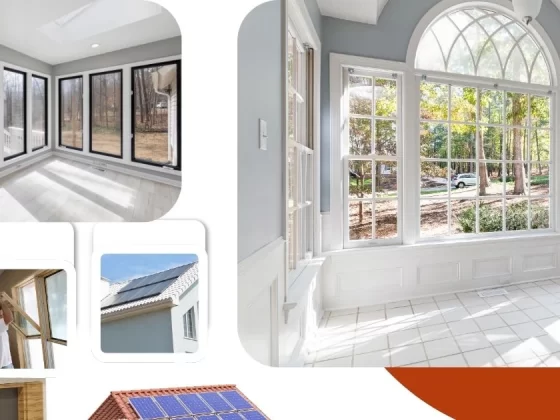The rise of electric vehicles and smart devices has made one thing very clear. Homes are now expected to handle much heavier charging demands than ever before. What used to be a simple outlet by the kitchen counter now needs to support car chargers, power stations, outdoor equipment, multiple laptops, and a growing collection of small electronics. Building a functional home charging station has become more than a convenience. It is a modern essential that supports both lifestyle and sustainability. The good news is that setting up your own system is easier than it sounds, and it can even help lower energy costs when done correctly.
As more households shift toward cleaner transportation, having a dedicated charging setup at home provides freedom and ease of mind. No one wants to leave for work in the morning only to find the car at twenty percent. A well-planned charging station becomes the heart of your personal energy ecosystem. It allows you to charge your vehicle, manage your devices, and stay organized. Most importantly, it ensures your home keeps pace with modern living. Let us walk through what you need to know to design a charging setup that works for your space, your habits, and your future needs.
Understanding Your Charging Needs
Every home is different, and so is every charging setup. Before you start buying cables or drilling holes in the garage wall, it is essential to understand what you want your charging station to do. Start by listing all the items you plan to charge regularly. Electric vehicles, smartphones, tablets, outdoor power tools, portable batteries, and laptops all count. Once you have the list, think about how often each item is used and how quickly you usually need it fully charged.
For example, someone who drives an EV with a large battery may need to charge overnight every day. Someone who works from home may need easy access to a laptop and charging for their desk accessories. A parent with teenagers may need extra charging stations to prevent the daily scramble for cables. When you identify what needs power and how often, it becomes easier to design a setup that can keep up without creating clutter or electrical strain.
Energy usage also plays an important role. An electric vehicle consumes significantly more power than a handheld electronic device. A Level 2 EV charger can draw more energy than multiple home appliances running simultaneously. Understanding these differences helps ensure your electrical system can handle the load. If you want room to grow, plan for additional devices or future upgrades, such as a second EV or a solar-charged battery system.
Smart Tips to Build a Home Charging Station Effortlessly
1. Choosing the Right Location for Your Charging Station
The correct location will save you time and frustration later. For EV owners, the most common spots are the garage, carport, or driveway area. Ideally, the charging cable should comfortably reach the vehicle without stretching or creating a tripping hazard. If you park outside, look for a spot close to the main electrical panel or where professional installers can run the wiring safely.
A clean, covered space offers added safety and durability. Rain and heat can affect the performance of outdoor charging equipment. Some homeowners choose to build a small weatherproof enclosure or install a covered wall mount to protect the charger from the elements. If your home does not have a garage, you can still set up a charging station on an exterior wall using outdoor-rated equipment.
For household devices, location is more flexible. A charging station can be placed in the office, kitchen, living room, or even in a hallway cabinet. Look for areas where people naturally drop their phones or bags when they get home. A charging drawer or counter can reduce clutter and help keep cords organized. Many people also choose to set up multiple small charging hubs in frequently used spaces throughout the home.
2. Planning Your Electrical Capacity
Before installing a Level 2 EV charger or multiple high-demand outlets, it is essential to check whether your home’s electrical system can support them. Most homes can accommodate an EV charger, although some may require upgrades. A licensed electrician can inspect your panel, evaluate the load, and suggest the right size and circuit breaker.
Level 1 chargers use a standard household outlet but charge the vehicle slowly. Level 2 chargers require a dedicated 240-volt line. This upgrade significantly shortens charging time, making it ideal for daily drivers. If you plan to add solar panels or a backup battery later, discuss these future options with your electrician so the current setup can be designed with expansion in mind.
Savvy homeowners also consider energy management systems. These can monitor real-time electricity usage, prevent overloads, and schedule charging during off-peak hours. For example, you can set your EV to start charging only after midnight when electricity rates are lower. This approach not only protects your electrical system but also lowers your monthly bill.
3. Selecting the Best EV Charger for Your Home
Once you have confirmed your electrical capacity, the next step is choosing the charger itself. Chargers come in different levels, speeds, and features. Level 1 chargers are included with most vehicles, but they work slowly. Level 2 chargers are the most popular home solution because they offer faster charging and more convenience.
Smart Level 2 chargers offer additional features, including app control, scheduling, energy monitoring, and overheat protection. These features make it easier to manage how and when your car charges. For example, you can track energy consumption directly from your phone or even lock the charger when you are away to prevent unauthorized use.
Some chargers have longer cables, while others require professional installation. Look for UL certification or other safety certifications that confirm the equipment meets national safety standards. If you live in an area with unpredictable weather, choose a charger with a high water resistance rating.
4. Organizing a Charging Area for Household Devices
The EV charger is only half of the equation. A modern home needs charging solutions for countless smaller devices as well. A well-organized charging area keeps everything tidy and prevents cable chaos. Start by choosing a designated station where multiple devices can charge at once. This can be a wall shelf, a drawer, a countertop organizer, or even a custom-built charging nook.
A charging organizer with built-in USB ports or wireless pads can simplify the setup. Some homeowners use a small countertop cabinet to store power banks, tablets, Bluetooth speakers, and smartwatches. Having a central charging area helps prevent lost devices and keeps everything neatly in one place. It also keeps cable clutter from spilling into every room.
Cable management tools are your best friend here. Velcro ties, adhesive clips, and cable tubes can turn a messy bundle of wires into a clean, easy-to-manage system. If you want a more polished look, consider hiding cables behind trim or inside furniture. A visually clean setup makes your home feel calmer and more organized.
5. Safety Measures to Consider
Safety should always be a priority when working with electrical projects. Although EV chargers are designed with strict safety standards, installation errors can still lead to fires, shocks, or system failures. This is why professional installation is strongly recommended for Level 2 chargers.

Make sure your charging equipment has surge protection and meets local electrical codes. Outdoor installations should use weatherproof covers and conduit to protect wiring from rain or pests. Keep the area around the charger clear of clutter. Avoid storing flammable materials near the charging equipment, especially in garages.
For household charging hubs, avoid overloading power strips. Use certified charging bricks and avoid plugging too many high-powered devices into a single outlet. If you have children at home, consider using outlet covers or placing charging stations higher to prevent accidents.
6. Smart Charging and Energy Savings
One of the best advantages of modern charging technology is the ability to save energy and reduce costs. Smart chargers use software to help you understand your energy consumption and offer tools to optimize it. By scheduling EV charging during low-demand hours, you can reduce your monthly energy bill. Some chargers even communicate with home solar systems to use excess solar energy instead of grid power.
For household devices, you can use smart plugs to turn chargers off when the device reaches 100% automatically. This reduces vampire energy consumption, which is the electricity devices draw even when they are not actively charging. While each device draws only a small amount, the combined total can add up over time.
If you have a home battery or plan to get one, your charging station can become a fully integrated energy hub. Instead of relying solely on the grid, you can charge your devices using stored solar energy during the day. This approach is becoming more popular with homeowners who want greater independence from rising electricity prices.
7. Preparing for Future EV and Device Growth
The technology industry moves fast, which means your home charging needs will only grow over the next few years. Planning can save you the hassle of repeated upgrades. If you expect to own more than one EV someday, talk to your electrician about installing a panel with room for multiple circuits. Some homes use load-sharing chargers that can charge two cars without overloading the system.
For indoor charging hubs, design the space with extra USB ports or modular shelves. New devices appear every year, and they usually require charging. By planning a flexible setup, you can easily expand when needed without rebuilding the whole station.
Smart homes are becoming more common. Expect more devices, not fewer. Think of smart doorbells, smart speakers, robot vacuums, and wearables. A thoughtful charging system keeps your home future-proof and ready for whatever new gadgets come along.
8. Cost Considerations
Setting up a home charging station varies in cost depending on your choice. A Level 1 charger uses your existing outlet, which costs nothing to install. A Level 2 charger ranges from a moderate to a higher investment, depending on the brand, features, and electrical upgrades needed. Installation costs can increase if your panel requires expansion or if the charger needs a long wiring run.
When budgeting, consider not only the equipment but also potential long-term savings. Many EV owners save significantly on fuel costs compared to gas-powered vehicles. Smart energy management can also reduce household electricity costs. You can also check if your local utility company offers rebates for EV charger installations. These incentives can offset installation expenses.
For device charging stations, costs depend on how elaborate you want the setup to be. A simple multi-port charger may be inexpensive, while a custom-built charging drawer or built-in shelf system will cost more. Regardless of the style you choose, a well-organized system is worth the investment because it improves workflow and daily convenience.
Real Life Examples of Home Charging Setups
Imagine a busy family with two cars, three teenagers, and a steady rotation of gadgets. Their EV charger sits in the garage, mounted on a side wall with a cable that easily reaches either car. A heat-resistant cable holder keeps the cord neat when not in use. Inside the house, a central charging drawer in the kitchen holds smartphones, earbuds, tablets, and power banks. Everyone has a dedicated spot, so no one fights over chargers.
Another example is a single professional who works from home. The EV charger is installed outside, next to the driveway, in a weatherproof box. The home office features a sleek charging hub with wireless charging pads and USB-C ports for laptops, headphones, and work accessories. Everything is within reach during work hours. A smart plug disconnects power after midnight to save energy.
A tech enthusiast may build a more advanced system. Their garage includes a Level 2 smart charger linked to a home solar array and battery. The house features multiple charging stations in different rooms. The living room has a hidden charging compartment in a side table. The bedroom has wireless pads built into the nightstands. Each station helps keep clutter under control.
Charging Made Simple, Living Made Better
Setting up a home charging station is one of the smartest upgrades you can make today. It supports your lifestyle, protects your devices, and prepares your home for a future centered on electricity. With thoughtful planning, a good understanding of your needs, and the right equipment, you can create a charging setup that feels organized, efficient, and ready for anything.
The best part is that once everything is in place, charging becomes almost effortless. Your EV charges while you sleep. Your devices remain organized and powered up. Your home becomes a comfortable and functional hub for modern living. Whether you are just getting started with your first electric vehicle or you want to improve your device charging routine, a well-designed system helps you stay one step ahead.






